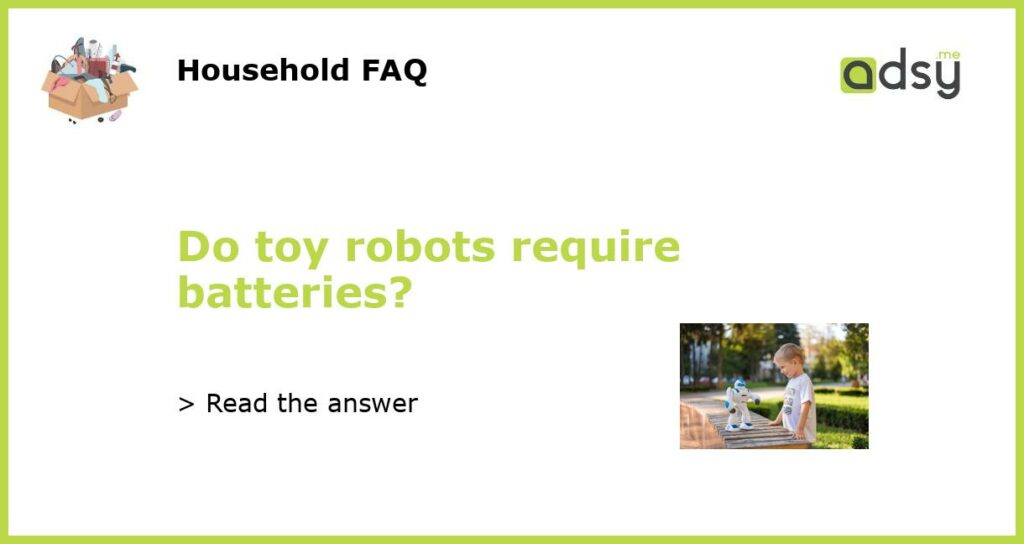Toy robots and batteries: A match made in tech heaven?
When it comes to toy robots, one question that often arises is whether or not they require batteries. The answer, as with many things in life, is: it depends. While there are toy robots that do not require batteries, the majority of them do. In this article, we will explore the reasons behind this, the different types of toy robots that require batteries, and the pros and cons of using batteries in toy robots.
Types of toy robots that require batteries
While some toy robots are specifically designed to operate without batteries, the majority of them do require some form of power source. This is due to the fact that toy robots require electrical energy to perform their various functions. Here are a few examples of toy robots that commonly require batteries:
- Remote-controlled toy robots: These types of toy robots typically require batteries for both the robot itself and the remote control. The remote control sends signals to the robot, which then carries out the corresponding actions. Without batteries, neither the robot nor the remote control would be able to function.
- Interactive toy robots: Interactive toy robots, such as those with voice recognition capabilities or the ability to respond to touch, also typically require batteries to power these features. These robots rely on electrical energy to process and respond to stimuli from their surroundings, making batteries an essential component.
- Walking and talking toy robots: Toy robots that are designed to walk, talk, and perform other physically demanding tasks often require batteries to power their motors and other mechanical components. Without batteries, these toy robots would not be able to move or carry out their intended actions.
The pros and cons of using batteries in toy robots
While batteries are necessary for many toy robots to function, they do come with their own set of pros and cons. Here are a few advantages and disadvantages of using batteries in toy robots:
- Advantages:
- Batteries provide a portable and convenient source of power for toy robots, allowing them to be used and operated in various locations without the need for a constant electrical outlet.
- With the advancements in battery technology, rechargeable batteries have become more prevalent. This option allows for a more cost-effective and environmentally-friendly approach, reducing the need for frequent replacements.
- Batteries can provide a consistent and reliable source of power, ensuring that the toy robot operates smoothly and consistently.
- Disadvantages:
- Using batteries adds to the overall cost of owning and operating a toy robot. Batteries need to be purchased and replaced regularly, which can be an ongoing expense.
- Depending on the type and size of the batteries used, they may not last very long before needing to be replaced or recharged. This can be frustrating for users who have to frequently change or recharge the batteries.
- Batteries can be harmful to the environment if not disposed of properly. It is important to recycle batteries and follow proper disposal guidelines to minimize their impact on the environment.
Exploring alternatives to batteries in toy robots
While batteries are the most common power source for toy robots, there are alternatives that can be explored. One such alternative is the use of solar power. Solar-powered toy robots harness energy from the sun, converting it into electrical energy to power their functions. These types of toy robots are often a more eco-friendly option, as they rely on renewable energy sources. Additionally, some toy robots can be powered by hand-crank mechanisms or through USB connections, reducing the reliance on batteries.
In conclusion
In conclusion, while there are toy robots that do not require batteries, the majority of them do. Toy robots that require batteries include remote-controlled robots, interactive robots, and walking and talking robots. While batteries provide a portable and convenient source of power, they also come with drawbacks such as cost and environmental impact. However, alternatives such as solar power, hand-crank mechanisms, and USB connections offer more sustainable options. Ultimately, the decision on whether to use batteries in toy robots depends on the specific needs and preferences of the user.






